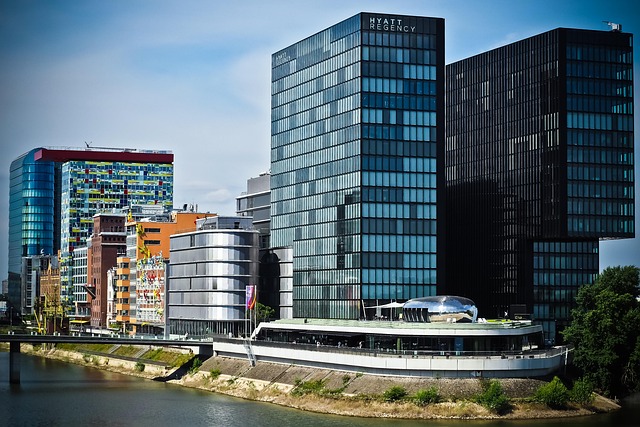In vibrant Karachi, understanding Defence View Proximity (DVP) is crucial for urban development. DVP impacts security, infrastructure, and civic planning due to the city's unique mix of military bases, ports, and coastal areas. By analyzing population density and traffic flows, a framework can be created to enhance security and improve accessibility to better serve citizens. The focus on scenic beauty and quality living encourages developers to incorporate open spaces into new residential areas, fostering vibrant communities. As Karachi grows, smart city initiatives are vital for optimizing resources, preserving cultural heritage, and integrating green spaces while addressing infrastructure challenges to maintain its livability.
Karachi, Pakistan’s vibrant metropolis, faces a unique challenge with ‘Defence View Proximity’—a spatial concept influencing urban development. This article explores how proximity to military installations shapes Karachi’s landscape, infrastructure, and future prospects. Through a conceptual framework, we analyze the impact on nearby communities, highlighting both challenges, such as noise pollution and security concerns, and opportunities for economic growth and strategic planning. Understanding these dynamics is crucial for sustainable development in Karachi.
- Understanding Defence View Proximity in Karachi: A Conceptual Framework
- The Impact on Urban Development and Infrastructure
- Challenges and Opportunities for the Future of Karachi
Understanding Defence View Proximity in Karachi: A Conceptual Framework

In the bustling metropolis of Karachi, understanding Defence View Proximity (DVP) is paramount for urban planners and policymakers. DVP refers to the accessibility and visibility of key defence installations within a city, which in Karachi’s context, means navigating a complex landscape that includes military bases, ports, and strategic locations along the coast. This concept is crucial as it influences security protocols, emergency response times, and even civic amenities planning.
A conceptual framework for DVP in Karachi should consider factors such as population density, traffic patterns, and existing infrastructure. By mapping these elements, we can identify areas that require enhanced security measures and those that might benefit from improved accessibility. In light of the city’s rapid growth and changing demographics, a dynamic model is essential to ensure that Karachi remains resilient and responsive to its diverse defence-related needs.
The Impact on Urban Development and Infrastructure

The concept of Defence View proximity in Karachi has profound implications for urban development and infrastructure. As one of Pakistan’s most populous cities, Karachi is constantly evolving, and the demand for quality living spaces is high. When new residential areas are developed with a focus on offering views of the Defence View—a popular landmark known for its scenic beauty—it sets a new standard for urban living. This trend encourages developers to prioritize open spaces, parks, and strategic land use planning, ensuring that future communities in Karachi remain vibrant and aesthetically pleasing.
Moreover, the impact extends beyond real estate. Infrastructure projects, such as road networks, public transportation, and utility services, must be designed or reconfigured to accommodate this spatial shift. The city’s traffic patterns might change as more residents move closer to the Defence View, leading to potential congestion hot spots and a need for enhanced road management systems. However, it also presents an opportunity to integrate smart infrastructure solutions, ensuring that Karachi remains efficient, sustainable, and livable as it continues to grow.
Challenges and Opportunities for the Future of Karachi

Karachi, as Pakistan’s economic powerhouse and a bustling metropolis, faces a unique set of challenges that impact its future development. One significant aspect is the issue of urban planning and infrastructure. The rapid growth of the city has led to inadequate space for essential services, transportation, and housing. Navigating this conundrum requires innovative solutions, such as smart city initiatives, that can optimize resource allocation and enhance the quality of life for residents.
The future of Karachi also presents a balance between preserving its rich cultural heritage and embracing modern developments. The city’s historical sites and vibrant tapestry attract tourists, but rapid urbanization might threaten these landmarks. Implementing sustainable practices, promoting green spaces, and integrating cultural elements into urban design can create a harmonious environment. In terms of opportunities, Karachi’s strategic location offers immense potential for economic growth through enhanced trade and port operations, positioning it as a regional hub.
Karachi’s future development hinges on effectively managing Defence View proximity. By understanding the conceptual framework, addressing infrastructure challenges, and leveraging opportunities, the city can evolve into a more sustainable and livable metropolis. This balanced approach will ensure that Karachi’s growth respects its unique geographical features while enhancing quality of life for its residents.
